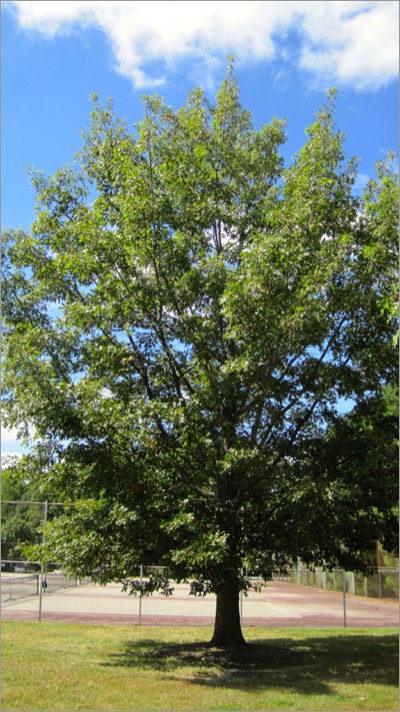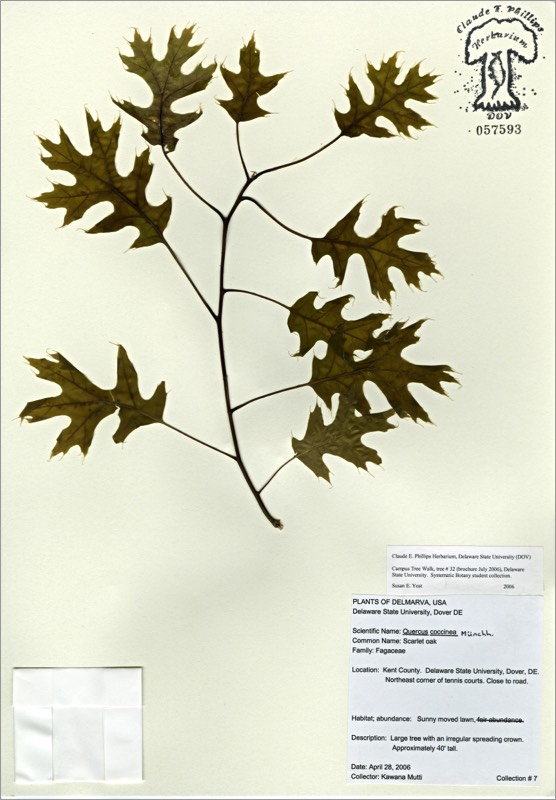Scarlet oak

Quercus coccinea
SCARLET OAK
Fagaceae
E. North America
Location: map coordinates B-14 (near northeast corner of tennis courts), N 39°11'18'' W 75°32'39''
Planting history: presently unknown.
Description:
Native species, State Rank S5 (very common in Delaware)
SCARLET OAK
Fagaceae
E. North America
Location: map coordinates B-14 (near northeast corner of tennis courts), N 39°11'18'' W 75°32'39''
Planting history: presently unknown.
Description:
- medium-sized deciduous tree
- etymology: Quercus = the Latin name; coccinea = scarlet (for the bright red fall foliage)
- leaves simple, alternate; deeply lobed; shiny above
- monoecious (separate male and female flowers on same tree); flowers tiny; male flowers in drooping catkins, female flowers inconspicuous
- fruit is an acorn (develops from ovary of female flower)
- in the “red/black oak” group: leaf lobes with bristle-tips; acorn matures in 2 years, relatively bitter and inedible unless processed
- end buds clustered (typical of oaks)
- fast-growing, relatively pest-free, likes acid soil.
Native species, State Rank S5 (very common in Delaware)


HIT REFRESH TO START LOCATION GRAPHIC